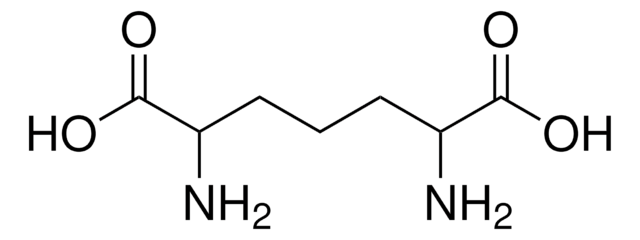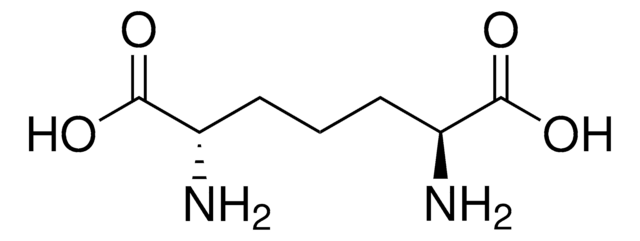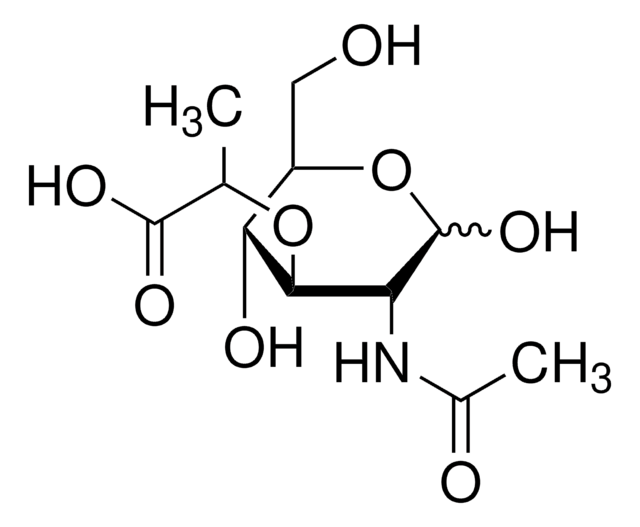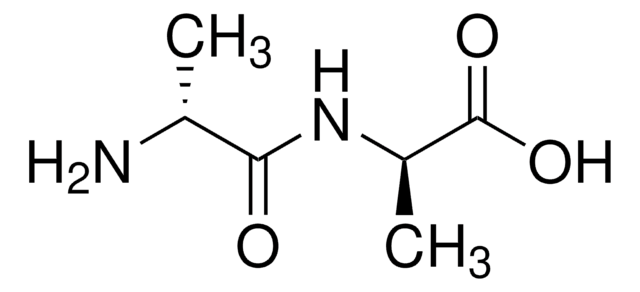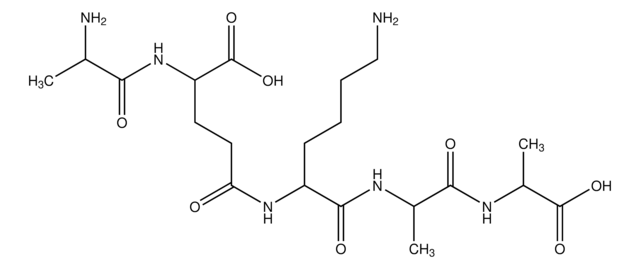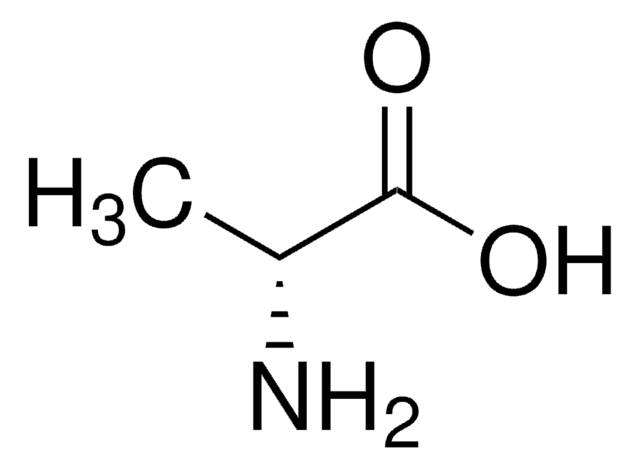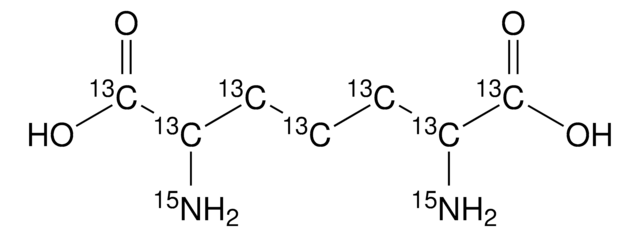07036
meso-2,6-Diaminopimelic acid
≥98% (TLC)
Sinonimo/i:
(2SR, 6RS)-2,6-Diaminoheptanedioic acid, meso-DAP
Autenticatiper visualizzare i prezzi riservati alla tua organizzazione & contrattuali
About This Item
Formula empirica (notazione di Hill):
C7H14N2O4
Numero CAS:
Peso molecolare:
190.20
Beilstein:
1726899
Numero MDL:
Codice UNSPSC:
12352106
ID PubChem:
NACRES:
NA.25
Prodotti consigliati
Livello qualitativo
Saggio
≥98% (TLC)
Stato
powder
Colore
white to faint beige
applicazioni
cell analysis
Stringa SMILE
N[C@H](CCC[C@H](N)C(O)=O)C(O)=O
InChI
1S/C7H14N2O4/c8-4(6(10)11)2-1-3-5(9)7(12)13/h4-5H,1-3,8-9H2,(H,10,11)(H,12,13)/t4-,5+
GMKMEZVLHJARHF-SYDPRGILSA-N
Categorie correlate
Applicazioni
Meso-2,6-diaminopimelic acid may be used to study peptidoglycan structure and function within the cell walls of bacteria.
Azioni biochim/fisiol
Penultimate biosynthetic precursor of the essential amino acid L-lysine. Component of peptidoglycan in the cell wall of many bacteria.
Confezionamento
Bottomless glass bottle. Contents are inside inserted fused cone.
Codice della classe di stoccaggio
11 - Combustible Solids
Classe di pericolosità dell'acqua (WGK)
WGK 3
Punto d’infiammabilità (°F)
Not applicable
Punto d’infiammabilità (°C)
Not applicable
Scegli una delle versioni più recenti:
Possiedi già questo prodotto?
I documenti relativi ai prodotti acquistati recentemente sono disponibili nell’Archivio dei documenti.
S Satyanarayana et al.
Amino acids, 21(3), 221-235 (2002-01-05)
Peptidoglycans isolated from two Fusobacterium species of anaerobic bacteria were analyzed for constituent amino acids. Hydrolysis conditions were varied to optimize the yield of diamino acids from peptidoglycan. The o-phthalaldehyde derivatives of the diamino acid stereoisomers were separated by high-performance
Luigi Franchi et al.
Cellular microbiology, 10(1), 1-8 (2007-10-20)
The innate immune system comprises several classes of pattern-recognition receptors, including Toll-like receptors (TLRs) and nucleotide binding and oligomerization domain-like receptors (NLRs). TLRs recognize microbes on the cell surface and in endosomes, whereas NLRs sense microbial molecules in the cytosol.
Chiral high-performance liquid chromatographic separation of the three stereoisomers of 2,6-diaminopimelic acid without derivatization.
Nagasawa, T., et al.
Journal of Chromatography A, 653, 336-340 (1993)
N V Potekhina et al.
European journal of biochemistry, 199(2), 313-316 (1991-07-15)
The teichoic acid from the cell wall of Actinomadura cremea INA 292 has an unusual structure, being a poly(galactosylglycerol phosphate) chain with glycerol phosphate groups. Monomeric units of 1-O, beta-D-galactopyranosylglycerol monophosphate are joined in the polymer by phosphodiester links involving
Yukari Fujimoto et al.
Methods in enzymology, 478, 323-342 (2010-09-08)
In this chapter, we describe synthetic studies on partial structures of lipopolysaccharide (LPS) and peptidoglycan (PGN), which work as tags for nonself recognition in innate immune system. Our previous studies demonstrated that lipid A is the endotoxic principle of LPS.
Il team dei nostri ricercatori vanta grande esperienza in tutte le aree della ricerca quali Life Science, scienza dei materiali, sintesi chimica, cromatografia, discipline analitiche, ecc..
Contatta l'Assistenza Tecnica.